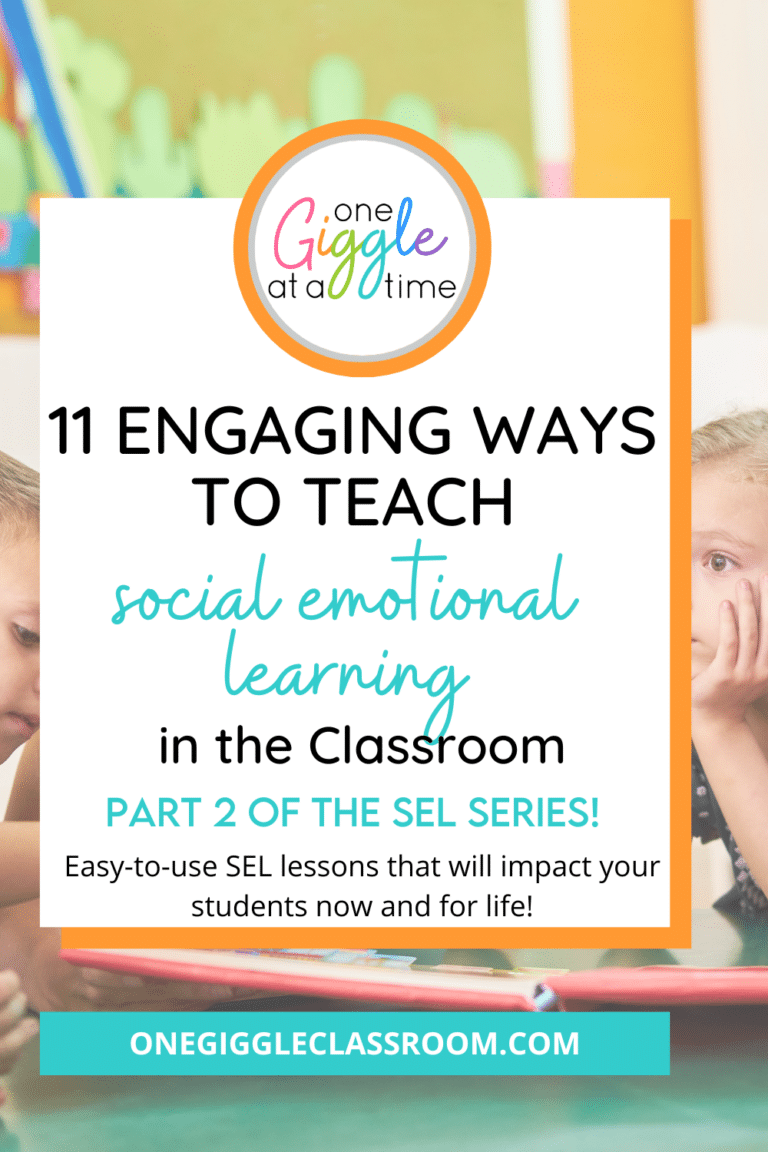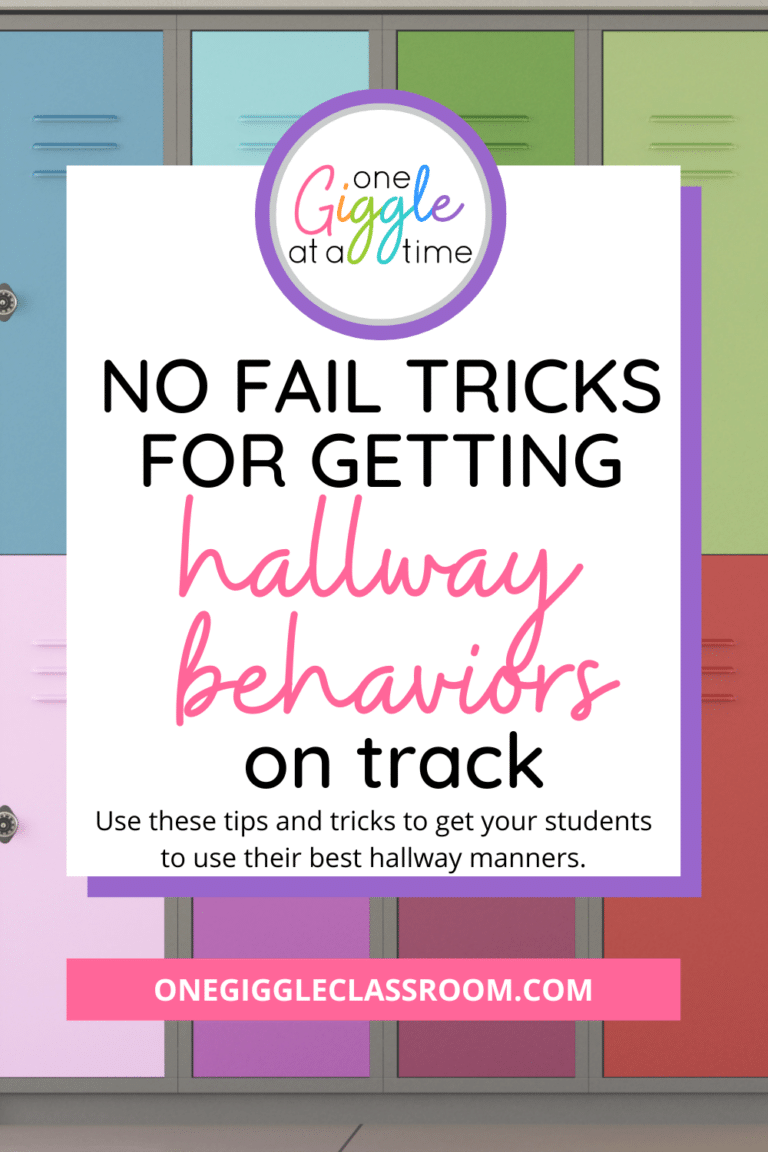
Why Teaching Social-Emotional Learning Has a Huge Impact on Students Today
Share This:
Social-Emotional Learning Series Part 1

Life is fast-paced and changing so quickly! On top of this, children feel so many feelings. Teaching students how to be aware of and manage their social-emotional health is essential for every aspect of their lives. Learn more about why teaching social-emotional learning in the classroom is so important from this part 1 of the Social-Emotional Learning Series!
What is Social-Emotional Learning?
Social-emotional learning (SEL) is the process of developing the self-awareness, self-control, and interpersonal skills vital for school, work, and life success.

5 Main Components of Social-Emotional Learning
There are five social and emotional skill areas that are essential to the development of positive mental health in students:
- Self-awareness
- Self Management
- Social Awareness
- Relationship Skills
- Responsible Decision Making
Teaching SEL works best when students learn skills from all five domains.
Why Teaching Social-Emotional Learning is Important
Social-emotional learning provides a foundation for positive long-term effects on children with many other benefits:
Creates Positive Childhood Experiences
Every child you teach and interact with has their own unique story. Some of those stories are filled with positive memories, but many students have been affected by adverse childhood experiences. As much as you’d love to take all of those away, you cannot change that.
On an encouraging note, it has been found that positive childhood experiences can
counteract some of the resulting trauma.
Social-emotional learning has the power to create some of those experiences for children and reinforce those childhood experiences that were already positive and healthy.
Builds Relationships
Teaching social-emotional learning helps students build relationships. Stronger relationships with teachers and peers help students feel love and a sense of belonging.

Teaches Empathy
As you teach SEL to your students, they also learn empathy. Empathy helps students feel understood and allows them to provide understanding to others.
Empathy is key when building a better classroom community!
Fosters Self-Awareness
Social-emotional learning fosters self-awareness so that feelings are understood.
When a child is mindful and aware of their own feelings, they can begin to consider the feelings of others and manage their own reactions easier.
Promotes Regulation of Feelings
You will also promote the regulation of feelings with students as you teach them social-emotional skills.

When they can regulate their feelings, they can attain and use positive social skills.
Increases Social Awareness
SEL supports positive social awareness so students can build an understanding of how to
interact with people.
…Another win for your classroom community!
Encourages Acceptance of Others
Teaching social-emotional learning also leads to students accepting others who look, think, or feel differently than them.
Accepting others is a skill needed not only in the classroom but for lifelong success as they work and play with people who come from various backgrounds and cultures.
Making Wise Decisions
SEL influences wise decision-making that will affect the many future choices of your students.

The Research Says…
Research by Joseph Durlak and his team in 2011 showed that teaching SEL:
- improves academic achievement by an average of 11%
- increases appropriate social behavior
- improves students’ attitudes
- reduces depression and stress
Who Benefits from SEL
The benefits of teaching social-emotional skills in the classroom are endless!
- Every child wins, no matter their story!
- The school wins
- Workplaces will benefit
- Society will become stronger
How Teaching SEL Impacts You as the Teacher
Consider the 5 main components of SEL and easily see the ways that teaching SEL will benefit YOU and your classroom:

1. Self Awareness
When students are self-aware, they have the ability to name their emotions and understand their “triggers”.
This immediately leads to a more positive classroom environment that runs more smoothly too!
2. Self-Management
When students develop self-management skills, they are more successful with independent learning.
This impacts you because then you will see more academic success and classroom productivity.
3. Social Awareness
Social awareness leads to empathy and valuing diversity among students.
Your classroom environment becomes a caring and supportive place where students feel safe and feel heard.
4. Relationship Skills
When students learn effective communication skills, conflict resolution, and cultivating friendships, they can participate in group and partner work more easily.
Classroom management is more manageable because students can positively coexist together!
5. Responsible Decision-Making
A child’s brain is not created for making responsible decisions.
This means children are vulnerable to outside influences and social pressures.
SEL lessons allow students to practice decision-making skills in a safe place. Responsible decision-making impacts you and your classroom environment because children are learning about the impact their decisions have on others and on their future.
Behavior management will become easier and less stressful for you as well!
When You Can Incorporate SEL
Social-emotional learning can be done separately or incorporated into other components of the day.
Much of social-emotional learning is taught naturally throughout the day as different situations arise. It doesn’t have to feel like an “extra thing”.

This is the true beauty of SEL– you can do it anywhere and any way that works for you and your students!
Next Steps
Make planning for SEL lessons a breeze with this FREE SEL planning guide!
Be on the lookout for part 2 of this SEL series with specific tips and SEL-related resources to use in your classroom.
Pin this post to refer to it later!

Related SEL resources:
Elopement | Running Away Social Skills Story and Activities
Separation Anxiety Social Skills Story & Coping Strategies
Self Regulation Social Skills Stories & Social Skills Activities Bundle
You also might like to read:
Top 10 Activities for Teaching Feelings in the Elementary Classroom
4 Powerful Ways to Immediately Boost Student Emotional Well Being
GUIDE STUDENTS IN DEVELOPING A GROWTH MINDSET WITH THESE
Free Growth Mindset Punch Cards
The perfect way to start meaningful habits and conversations with your students!


Diane Romo
Thank you for being here! I love sharing ideas with other teachers! If you are looking to enhance your teaching and build a positive classroom community, you have come to the right place!













